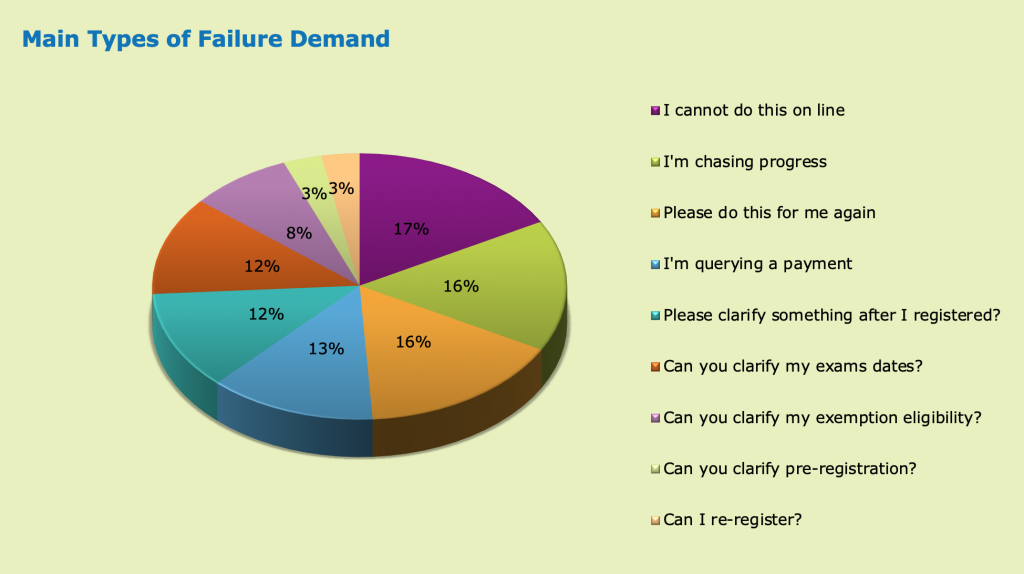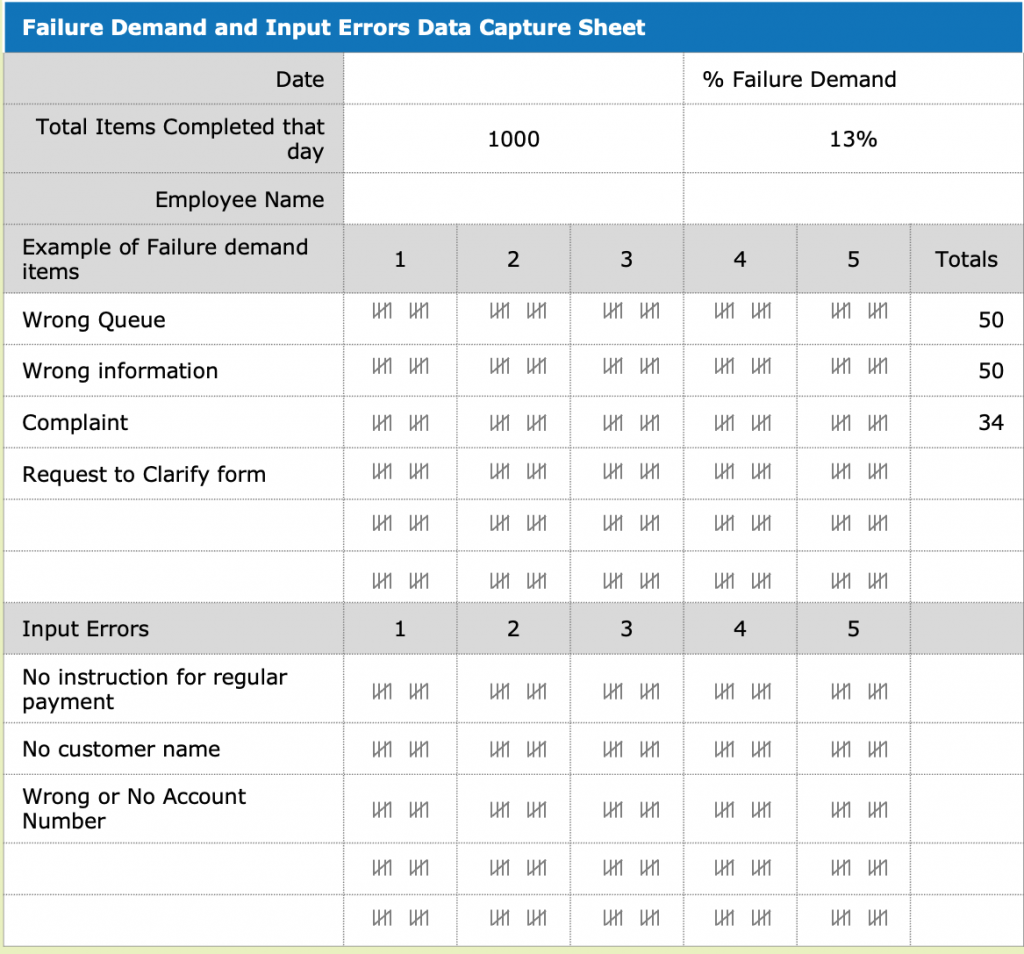To continue our series of helpful articles on measurement, we take a quick look at…

ChangeWise Quick Read: Measurement Series – What is Failure Demand?
To complement our series of QuickReads covering measurement, we will now explore Failure Demand (FD). This includes how to define it, typical types of failure demand, how to measure it and the benefits of better understanding how FD impacts your organisation.
What is Failure Demand?
Simply put, failure demand is ‘demand caused by failure to do something or do something right for the customer (John Seddon, Freedom from command & control)’. In an ideal world, failure demand would never exist in our process.
For example, I order a pair of black sunglasses – but I am sent a blue pair. Or perhaps the sunglasses arrive broken due to insufficient packaging, or they arrive 3 days late. These instances are examples of failure demand because they cause me (the customer), to perform additional tasks that create additional activity within the company I am interacting with. This is equally as prevalent in the service industry. For example, failing to solve a customer’sproblem, sending out forms that customers have difficulty filling-in or sending the wrong information. All these instances create demand that result in extra work.
One easy check we encourage our clients to ask is ‘would the customer be prepared to pay for this?’. If the answer is no, it’s failure demand.
Why is understanding failure demand so important?
Understanding failure demand allows us to deliver quality products and services to our customers, reduce operating costs, increase employee satisfaction and ensure competitive advantage. Identifying failure demand and engaging employees in the importance of eliminating it will shift the organisation’s culture to one driven by value.
Identifying Failure Demand
Demand can be categorised into 2 types; Value Demand (that which drives revenue) and Failure Demand (that which reduces revenue). To identify failure demand, we need to analyse the demand our customer’s make and understand how much of it is caused by our failure to do something right. The chart below illustrates some typical examples:

Measuring Failure Demand
Once you have a better understanding of where failure demand exists within your process, you can start to measure it. You may not have the necessary data readily available, so start with the process experts who can help you define the types of failure demand that exist within the current state. It may be necessary to Value Stream before you can create a Failure Demand Data Capture sheet.
Once you have collected the information, you can add-up all failure demand to form the basis of your future state design. Failure Demand is an ongoing process of improvement, understanding where and how much of it exists within your value stream will allow you to constantly improve the process and increase value.

In Summary
Failure Demand is a concept created by John Seddon (Freedom from Command & Control), and is described as ‘demand caused by failure to do something or do something right for the customer.’ Understanding where failure demand exists within our process increases our ability to deliver quality products and services for our customers, reduce operating costs, increase employee satisfaction and ensure competitive advantage.
Want to learn more about driving value within your organisation? Get in touch with the ChangeWise teamat info@changewise.co.uk
Visit us at ChangeWiseNews for related ChangeWise QuickReads:
- Value Analysis
- The Data Collection Plan
- Measurement Categories
- Clarifying Customer Requirements; CTQ Measures
- Sourcing Customer Voice
- The Issue with Data
- Sampling Techniques
- Data Collection Strategies
- Data Types
ChangeWise believes employee engagement is the foundation for successful Change. Training and coaching your people to use simple continuous improvement techniques will enable your organisation to continuously adapt and stay ahead in a constantly changing and challenging environment.
For updates and interesting Lean Change insights, connect with us on LinkedIn.



